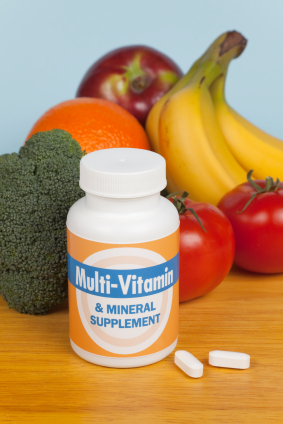Vitamin A (Beta Carotene)
Overview:
Vitamin A is generally found as Beta-Carotene and Retinol and converted
to Vitamin A in the body.
These previtamins are generally found in plants, liver, egg yolk,
cheese, and milk.
How This Vitamin Works in Your Body:
Aids in treatment of some eye disorders, including prevention of
night blindness and formation of visual purple in the eye
Promotes bone growth, teeth development, reproduction
Helps form and maintain healthy skin, hair, mucous membranes
Builds body's resistance to respiratory and other infections (including
measles in the third world)
May help treat acne, impetigo, boils, carbuncles and open ulcers
when applied externally
May help control glaucoma
Potential guard against effects of pollution and smog--beta-carotene
acts as an antioxidant (see Glossary)
May speed healing
Possibly helps remove age spots
May improve immunity
May help heal skin lesions, cuts and wounds
Possible treatment for hyperthyroidism
Who Should Take This:
Anyone with inadequate caloric or nutritional dietary intake or
increased nutritional requirements
Those who abuse alcohol or other drugs
People with a chronic wasting illness or prolonged fever
Those under excess stress for long periods
Anyone who has recently undergone surgery
People with recent severe burns or injuries
Malnourished children with impaired immunity
Where This Vitamin is Found:
Apricots, fresh
Asparagus
Broccoli
Cantaloupe
Carrots
Eggs
Endive, raw
Kale
Leaf lettuce
Liver
Milk
Mustard greens
Pumpkin
Spinach
Squash, winter
Sweet potatoes
Tomatoes
Watermelon
How to Use:
Available as:
Liquid: the best form due to its high bioavailability and fast absorption.
Always choose liquid as your first choice when supplementing your
diet.
Tablets: available
Recommended Daily Intakes
Men: 1000 mcg RE (3333 IU)
Women: 800 mcg RE (2666 IU)
Pregnancy: 800 mcg RE (2666 IU)
Lactation: +500 mcg RE (1666 IU)
Cautions:
Consult your doctor if you have:
Cystic fibrosis
Diabetes
Intestinal disease with diarrhea
Kidney disease
Liver disease/liver enlargement
Overactive thyroid function
Disease of the pancreas
Viral hepatitis
Chronic alcoholism
Pregnant
Lactating
Over 55:
Take carefully to avoid toxicity.
Pregnancy:
Always consult doctor during pregnancy. Keep within DRI.
Breastfeeding:
Always consult doctor during lactation. Keep within DRI.
Storage:
Heat and/or moisture may alter the vitamin. Refrigeration is recommended.
Symptoms of Deficiency:
Symptoms include night blindness, lack of tear secretion, changes
in eyes--eventual blindness if deficiency is severe and untreated,
susceptibility to infectious diseases, especially respiratory, dry,
rough skin, weight loss, poor bone growth, weak tooth enamel, diarrhea,
slow growth, acne, insomnia, and fatigue.
Overdose:
Signs of Overdose:
Bleeding from gums or sore mouth
Bulging soft spot on head in babies
Hydrocephaly (water on the brain)
Confusion or unusual excitement
Diarrhea
Dizziness
Double vision
Headache
Irritability
Dry skin
Hair loss
Peeling skin on lips, palms and in other areas;
Seizures
Vomiting
Enlarged spleen and liver
Side Effects:
Reaction or effect: What to do:
Abdominal pain Discontinue. Consult doctor immediately.
Appetite loss Discontinue. Refer to your doctor soon.
Bone or joint pain Discontinue. Consult doctor immediately.
Discomfort, tiredness or weakness Discontinue. Refer to your doctor
soon.
Drying or cracking of skin or lips Discontinue. Consult doctor immediately.
Fever Discontinue. Consult doctor immediately.
Hair loss Discontinue. Consult doctor immediately.
Headache Discontinue. Refer to your doctor soon.
Increase in frequency of urination Discontinue. Refer to your doctor
soon.
Increased sensitivity of skin to sunlight Discontinue. Refer to
your doctor soon.
Irritability Discontinue. Refer to your doctor soon.
Vomiting Discontinue. Consult doctor immediately.
Interactions:
Interacts with: Combined effect:
Antacids Absorption of vitamin A decreased.
Calcium supplements May decrease efficacy of calcium supplementation.
Cholestyramine, colestipol Absorption of vitamin A reduced.
Mineral oil, neomycin Absorption of vitamin A reduced.
Olestra-fat substitute Vitamin-A and beta-carotene absorption reduced.
Oral contraceptives Vitamin-A concentrations increased.
Vitamin E Reduce vitamin-E levels over time.
Tobacco/ Alcohol Decreases absorption of vitamin.

